My Pro Secrets for a Holiday Fruit Platter That Actually Wows People
I’ve spent more years than I can count in professional kitchens and catering, and I’ve seen food trends come and go. But one thing is timeless: a truly great fruit platter has a magnetic pull. During the holidays, it’s more than just a healthy bite; it’s a vibrant, fresh centerpiece that cuts through all the rich, heavy foods.
In this article
But we’ve all seen the sad ones, haven’t we? The plate with the browning apple slices, mushy grapes, and that one lonely, pale wedge of cantaloupe. The good news is that the difference between that sad plate and a stunning display isn’t about buying expensive, exotic fruits. It’s all about technique, timing, and understanding your ingredients a little better.
I had a mentor, a tough old-school chef, who made me build fruit platters for an entire week straight. He taught me that fruit is a delicate medium. You have to know its secrets. Why do apples turn brown? How do you pick a pear that will be perfectly ripe in two days, not two hours? That’s the kind of knowledge I want to share. Let’s get into the pro methods that will help you create a holiday fruit display that looks amazing and stays fresh all night long.
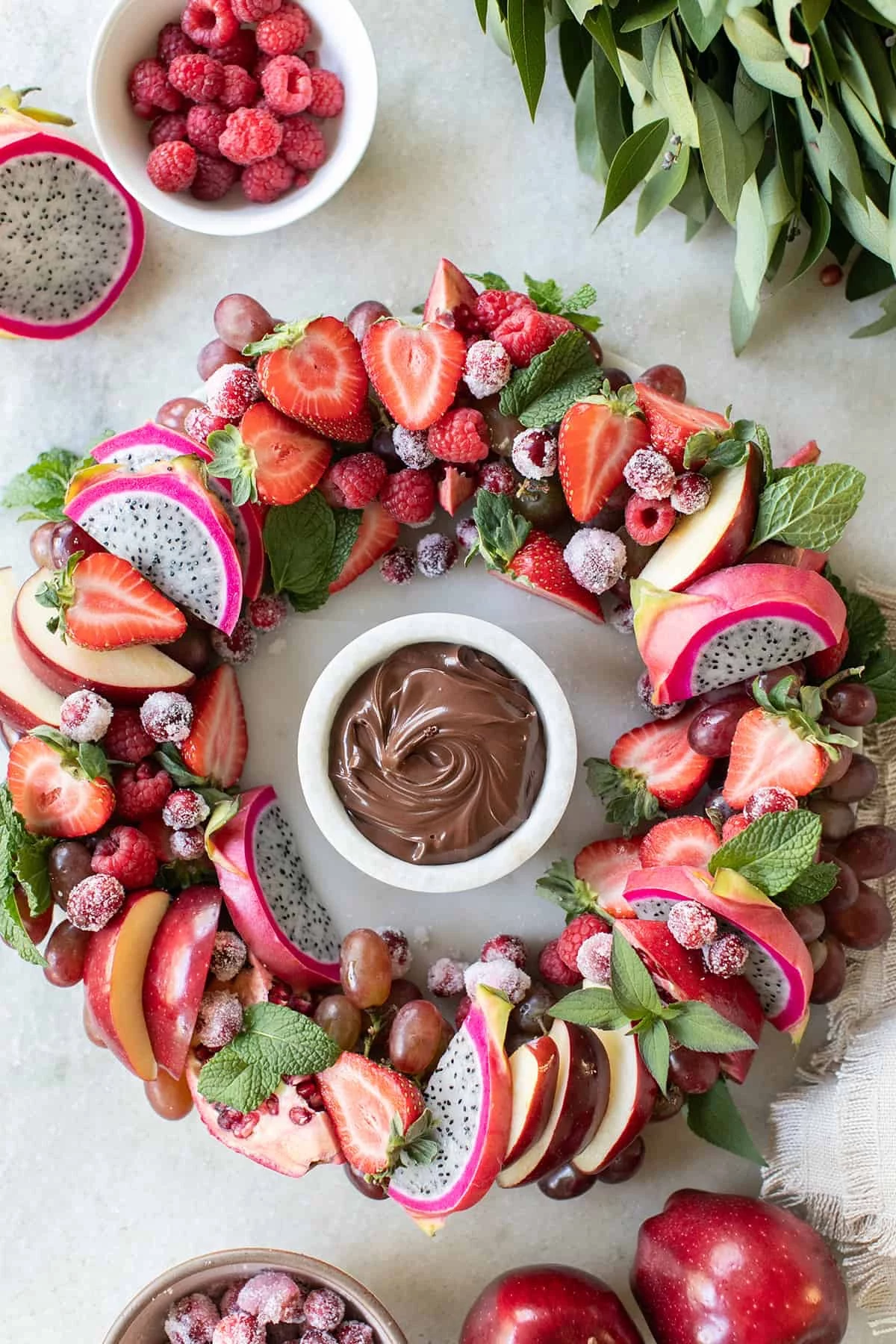
First Things First: Outsmarting Your Fruit
Before you even pick up a knife, it helps to know what you’re up against. The two biggest challenges are browning (oxidation) and ripeness. If you can get a handle on these two things, you’re already 80% of the way to a perfect platter.
How to Stop Fruit From Turning Brown
You know that unappealing brown tint that appears on sliced apples, pears, and bananas? That’s oxidation. The moment you cut the fruit, its cells are exposed to oxygen, and an enzyme inside goes to work, causing the browning and a slightly softer texture. Here’s how we deal with it in the pros.
First up is a simple acid bath. This is the most common method for a reason. Just mix one part lemon or lime juice with about three parts cold water. As you slice your apples or pears, drop them into this solution for a couple of minutes. Then, drain them really well and pat them dry. The citrus flavor is usually very faint and actually complements the fruit. It’s my go-to for big batches.
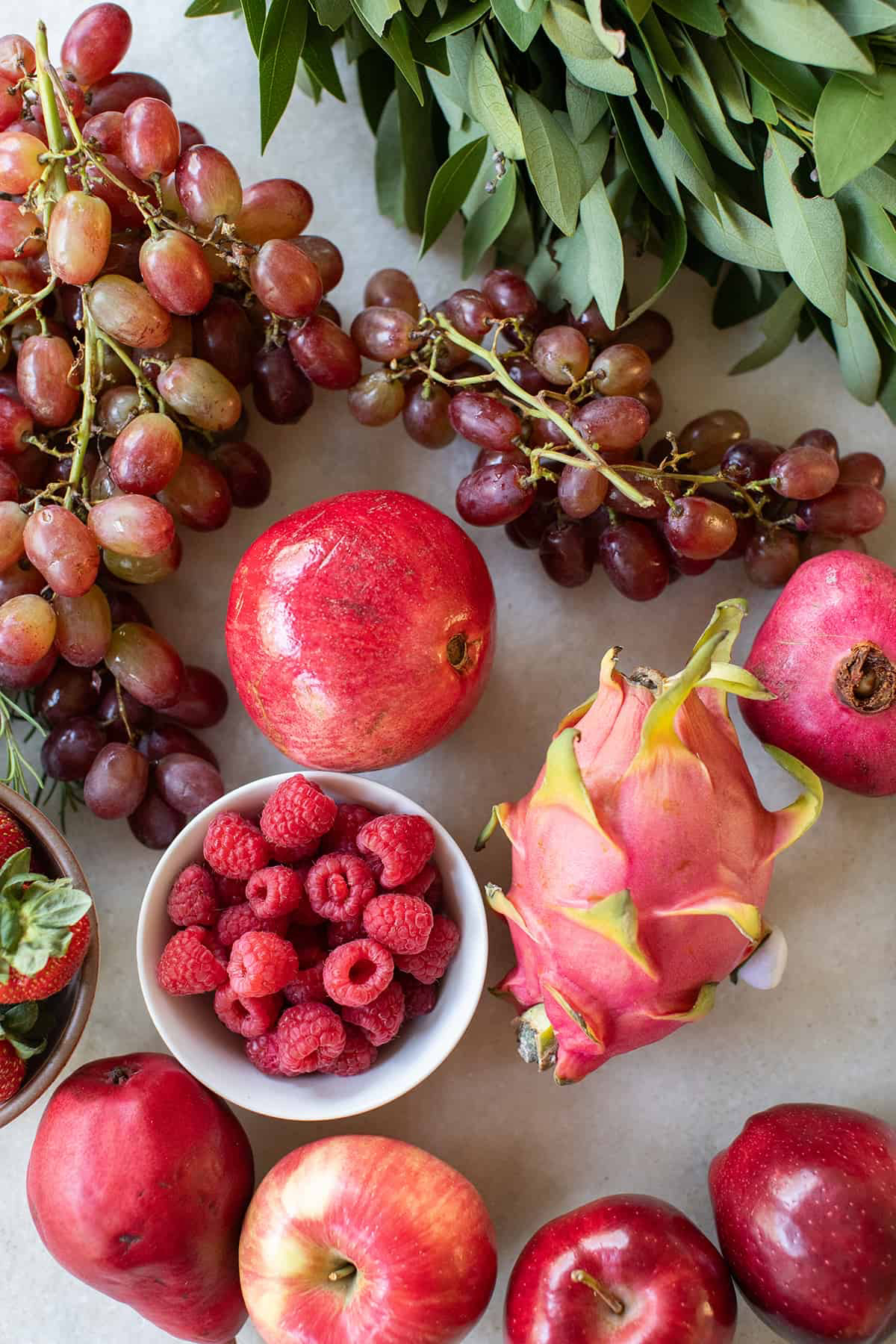
Another option is using powdered ascorbic acid, which is basically just Vitamin C. You’ll find it in the grocery store’s canning aisle, often sold under the brand name Fruit-Fresh. It’s a fantastic antioxidant that works like a charm without adding any flavor at all. This is a great choice if you have picky eaters or are worried about a citrus taste. Just follow the directions on the package.
Oh yeah, and here’s a trick that surprises people: a mild saltwater soak. Use about half a teaspoon of regular table salt per quart of cold water. Let the fruit soak for about five minutes, and then—this is important—rinse it thoroughly with fresh water to get rid of any saltiness. I find this works especially well for apples that are going on a board with savory cheeses.
Heads up! Don’t let your fruit soak for too long in any of these solutions. A few minutes is all you need. Any longer and you risk making the fruit waterlogged and losing that crisp texture.
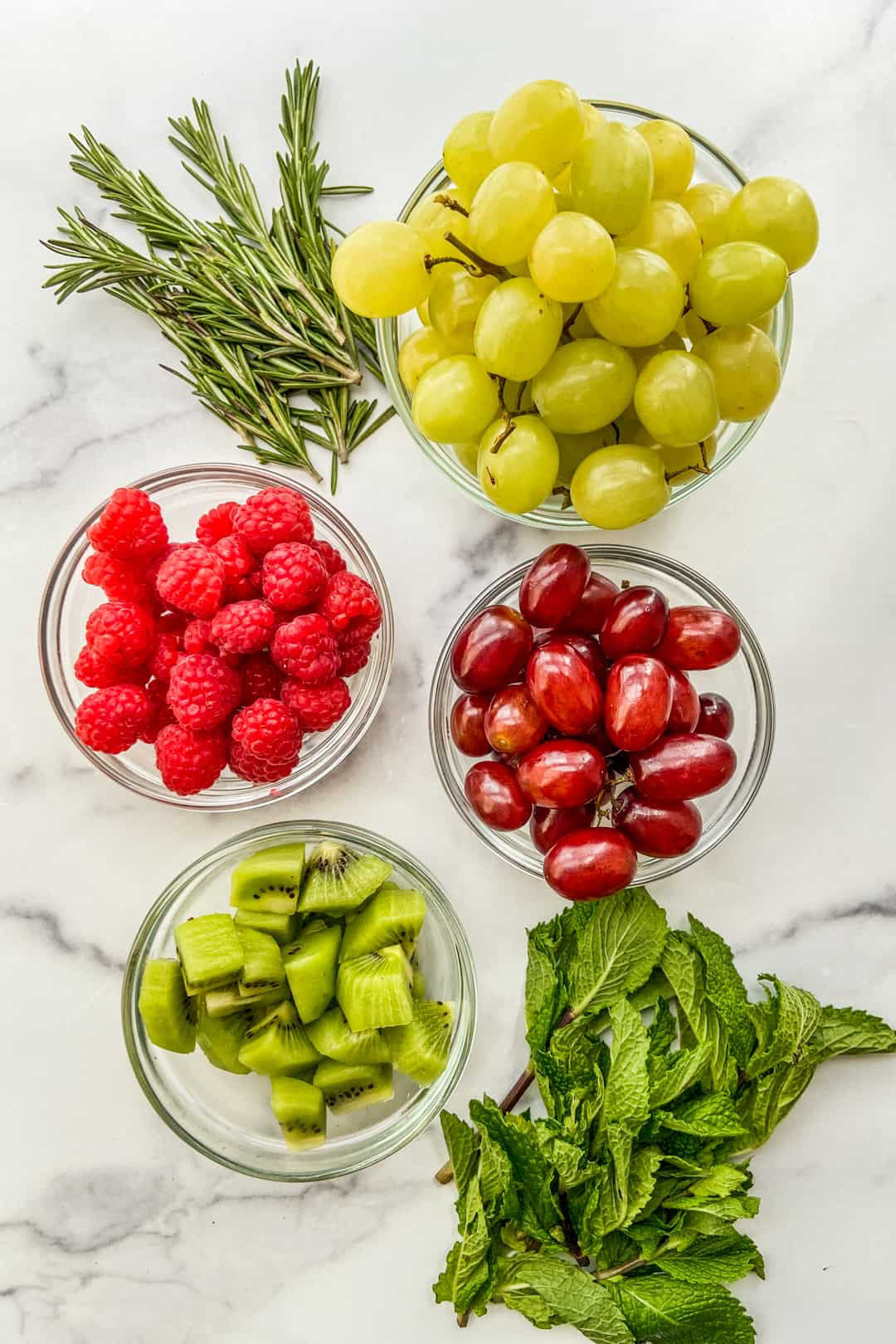
The Ripeness Game and That Ethylene Gas
Some fruits, like apples, bananas, and melons, release a natural gas called ethylene as they ripen. This gas acts like a little ripening signal to other fruits nearby. It’s why you don’t store your ripe bananas next to other produce unless you want it to ripen up fast!
When you’re shopping for your platter, think ahead. I usually buy my pears and kiwis when they’re still quite firm and let them sit on the counter for a day or two. For a platter, you want fruit that’s flavorful but still firm enough to hold its shape. A mushy pear just falls apart. To check, gently press the neck of the pear near the stem; a little give means it’s ready. For kiwis, a gentle squeeze in your palm should reveal a slight softness. Buying fruit three or four days ahead of your party gives you control over the ripening process.
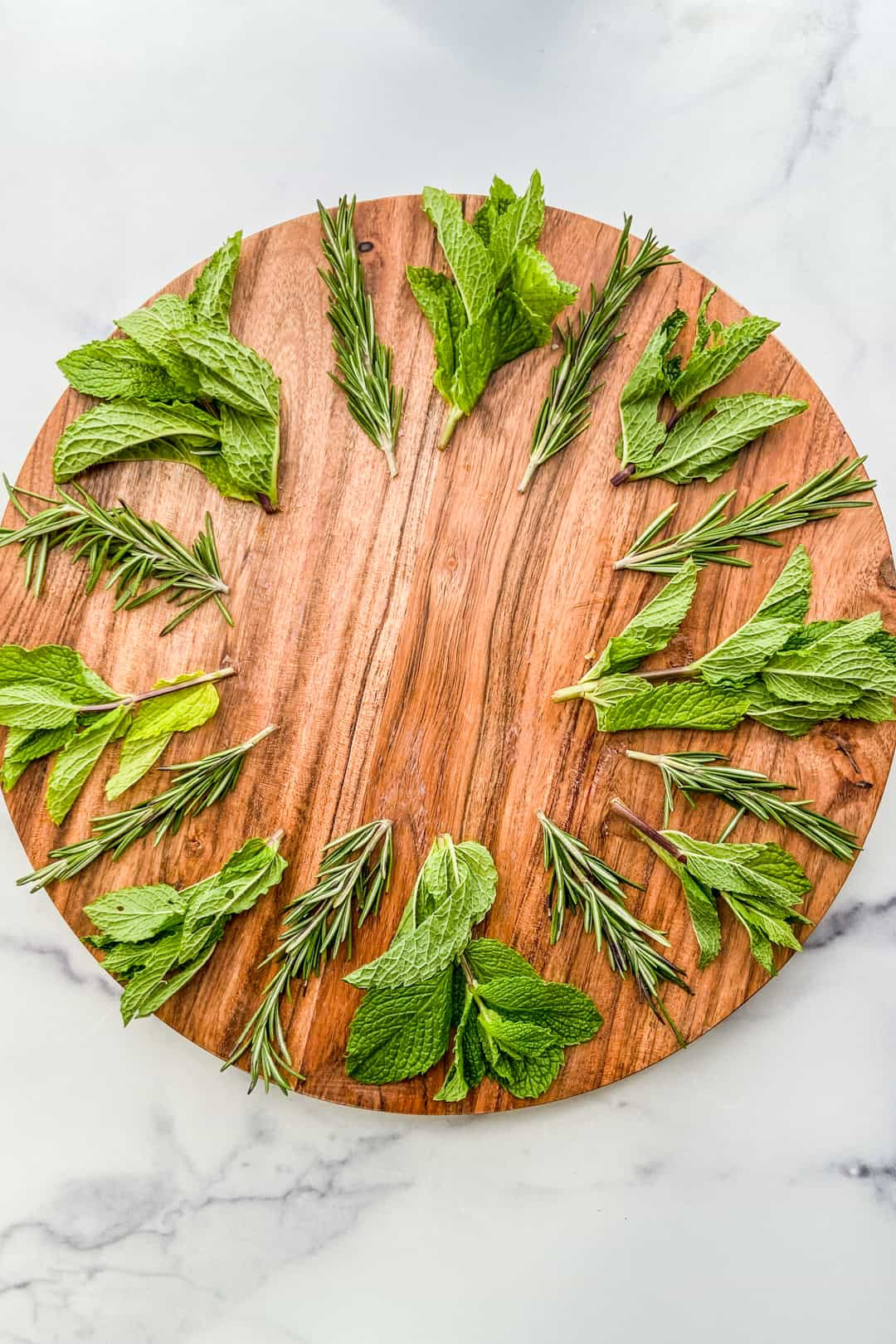
How to Cut and Arrange Like a Pro
This is where the magic happens. The way you cut and arrange the fruit is what creates that massive visual impact. It’s about creating different shapes, textures, and a flow that draws the eye in.
Your Essential Tools
You really don’t need a bunch of fancy gadgets. Honestly, my must-haves are a sharp chef’s knife, a good paring knife, and a cutting board that doesn’t slide around. A sharp knife is a safe knife, because you don’t have to force it. My 8-inch chef’s knife is for big stuff like melons, and the paring knife is for the detail work.
For the cutting board, please use one with some grip! If yours likes to slide, just put a damp paper towel underneath it. It’s a simple trick that prevents accidents. And you don’t need to spend a fortune—I’ve found some of my best wooden boards for under $20 at places like HomeGoods or Target.
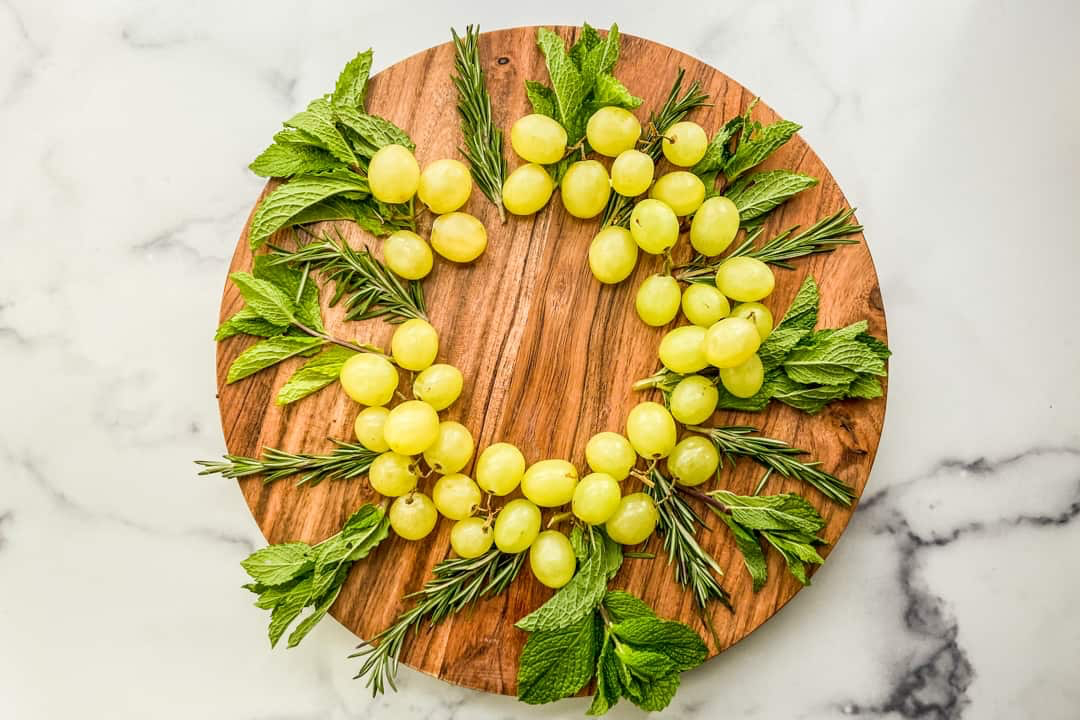
A Few Key Cutting Techniques
- Supreme-ing Citrus: This sounds super fancy, but it just means cutting an orange or grapefruit into perfect, membrane-free segments. It makes the fruit look elegant and so much easier for guests to eat. Just slice the top and bottom off the orange, stand it up, and slice down the sides to remove all the peel and white pith. Then, take your paring knife and carefully cut between the white lines to pop each segment out.
- Fanning Strawberries: This is an easy one that looks great. Keep the green top on for color. Place the strawberry pointed-side up and make several thin, parallel slices from just below the top down toward the tip, but don’t cut all the way through. Then gently press on it to fan the slices out. Beautiful.
- Creating Fun Shapes: This is a great way to get kids interested. A simple crinkle cutter can turn melon slices into fun wavy shapes. You can also use small cookie cutters on slices of cantaloupe or honeydew to make stars or hearts.
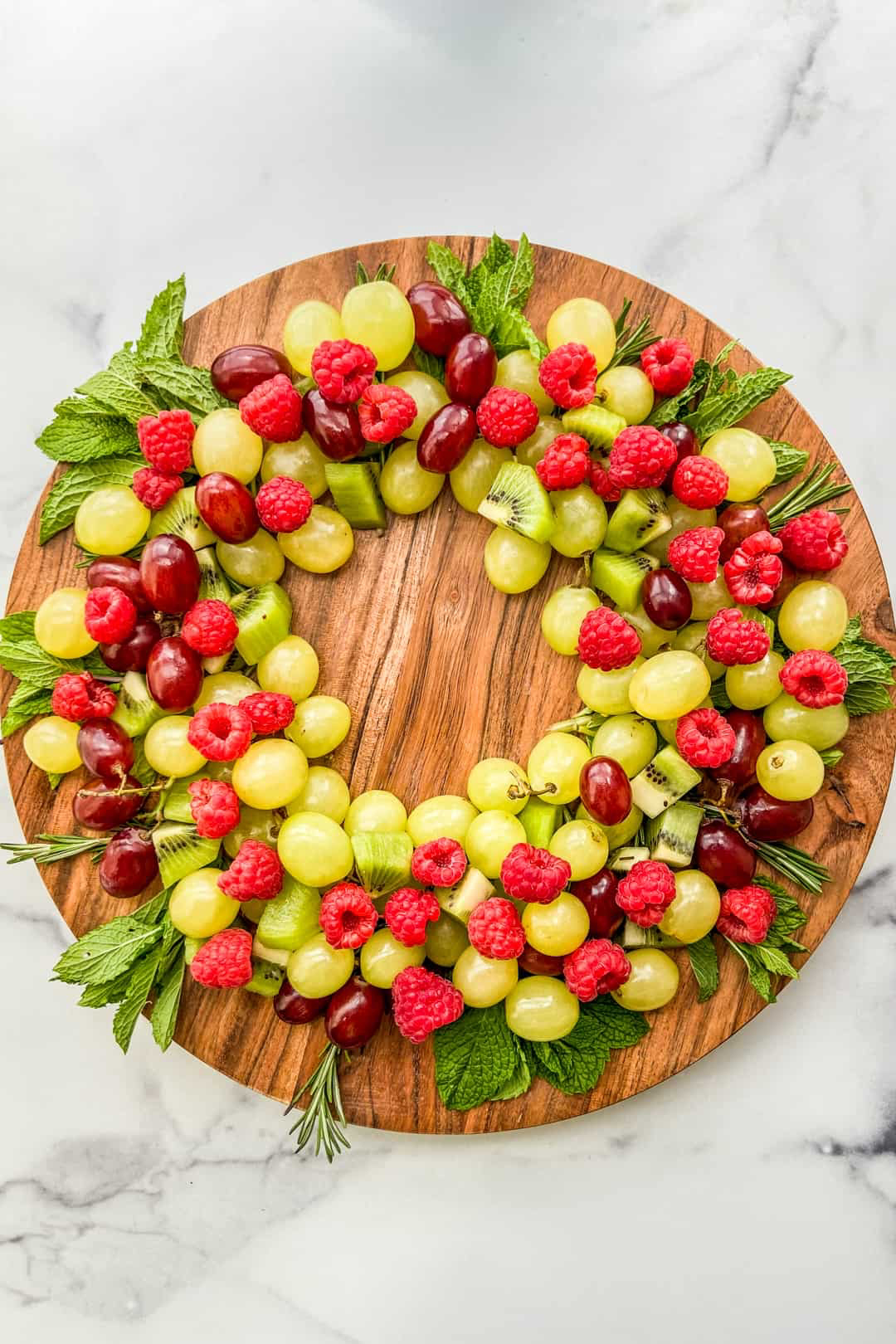
The Art of Building the Platter
Think of this like painting. Start with a good canvas—a large wooden board gives a warm, rustic feel, while a white ceramic platter makes the fruit colors pop. For a party of 15-20, I’d grab a platter that’s at least 18 inches across.
1. Start with Your Anchors: Before any fruit touches the board, place your bowls. This is for your dips or for small, loose items like pomegranate seeds. Placing them first forces you to build around them, creating a more professional, integrated look.
2. Add the Dip: And speaking of dips, you need a good one. My dead-simple, never-fails recipe is just an 8-ounce block of softened cream cheese whipped with about a 1/4 cup of brown sugar and a splash of vanilla. It takes two minutes and people go crazy for it.
3. Build Your Structure: Next, add your biggest items—melon wedges, big clusters of grapes, pineapple slices. Arrange them in sweeping curves or distinct groups, not just scattered randomly. Create a path for the eye to follow.

4. Layer and Block Colors: This is a big one. Group your fruits by color. A block of red strawberries next to a block of green kiwi has way more impact than if they were all mixed up. Overlap the slices slightly to create a look of abundance.
5. Fill the Gaps: Now use your smaller fruits—berries, cherries, those pomegranate seeds—to fill in any empty spaces. This is what makes the platter look full and luxurious. No empty spaces unless they are intentional!
6. Get Some Height: A flat platter is a boring platter. Create some dimension by mounding your grapes or using a pineapple half as a dramatic, edible bowl for other fruits.
Choosing Your Holiday Fruits
The best platters use what’s in season. For the winter holidays, we’re lucky to have some naturally festive options.
Look for beautiful citrus like clementines and blood oranges, which are at their peak. Pomegranates are a must—their ruby-red seeds (called arils) just scream ‘festive.’ A quick tip for de-seeding them with less mess: cut the pomegranate in half, hold it cut-side down over a bowl, and give the back a few firm whacks with a wooden spoon. The seeds fall right out.
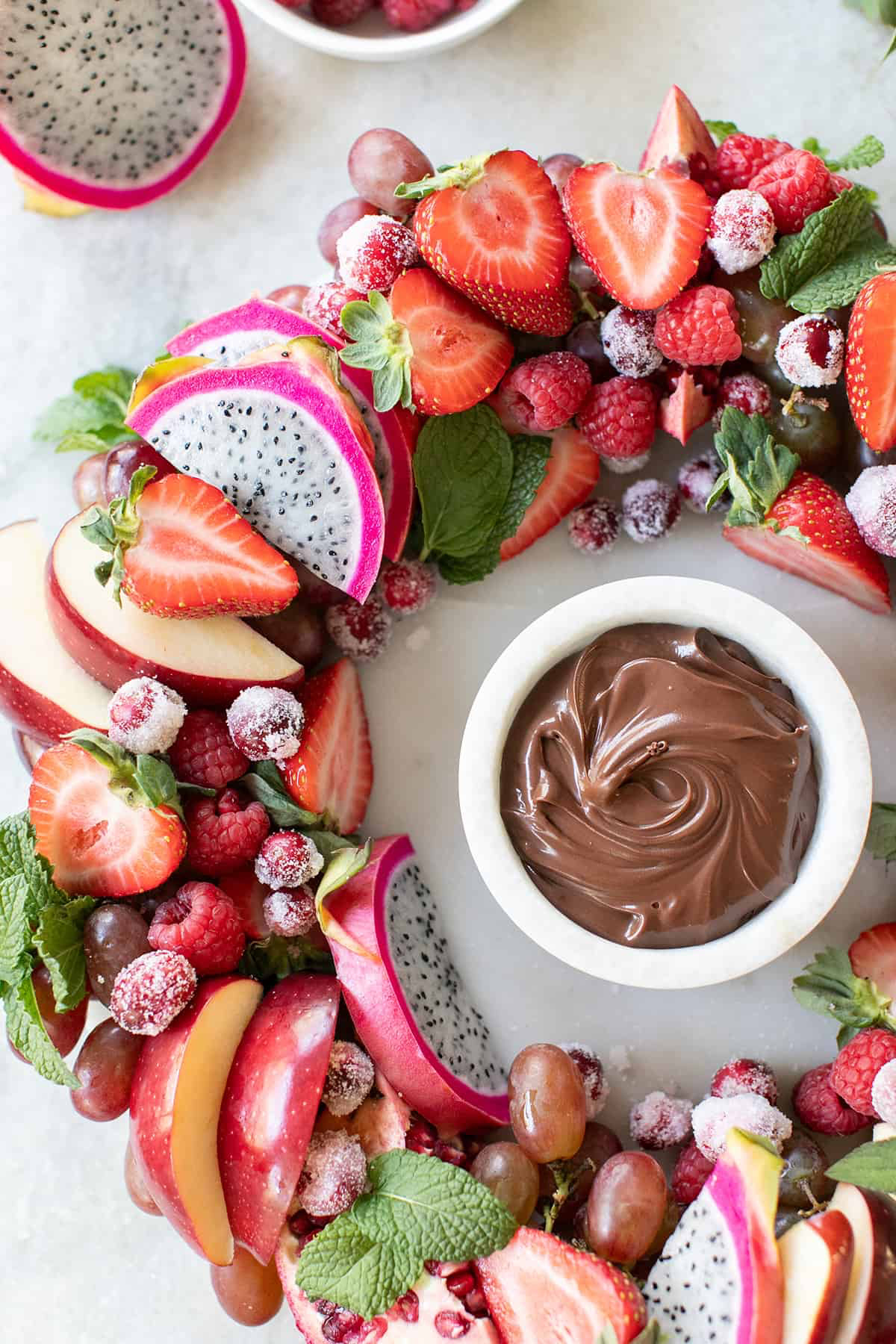
Winter pears like Bosc and Anjou are fantastic, and crisp Fuyu persimmons are a wonderful, sweet addition (make sure they’re Fuyu, which can be eaten firm!). For a pop of color, scatter some fresh, whole cranberries across the board—just remind your guests they’re for decoration, as they’re incredibly tart on their own.
Of course, if you live somewhere warm, lean into it! A holiday platter in a sunny climate can be gorgeous with tropical fruits like star fruit, mango, and papaya.
Your Game Plan: Timeline, Budget, and Logistics
Let’s get practical. Here’s how to pull this off without any last-minute stress.
A Sample Shopping List & Budget
This list will give you a great mix of color and texture for a generous platter.
- Structural Fruits: 1 small pineapple, 1 cantaloupe, bunches of red and green grapes.
- Slicing Fruits: 2 red apples, 2 green apples, 2 firm pears.
- Color & Filler: 1 pint each of strawberries, blueberries, and raspberries. 2-3 kiwis.
- Festive Accents: 1 pomegranate, 3-4 clementines.
- Garnish & Prep: Fresh mint sprigs and 1 lemon.
Good to know: A list like this will build a seriously impressive platter that serves a crowd of 15-20 people. Depending on your location and what’s on sale, you can expect to spend between $40 and $60.
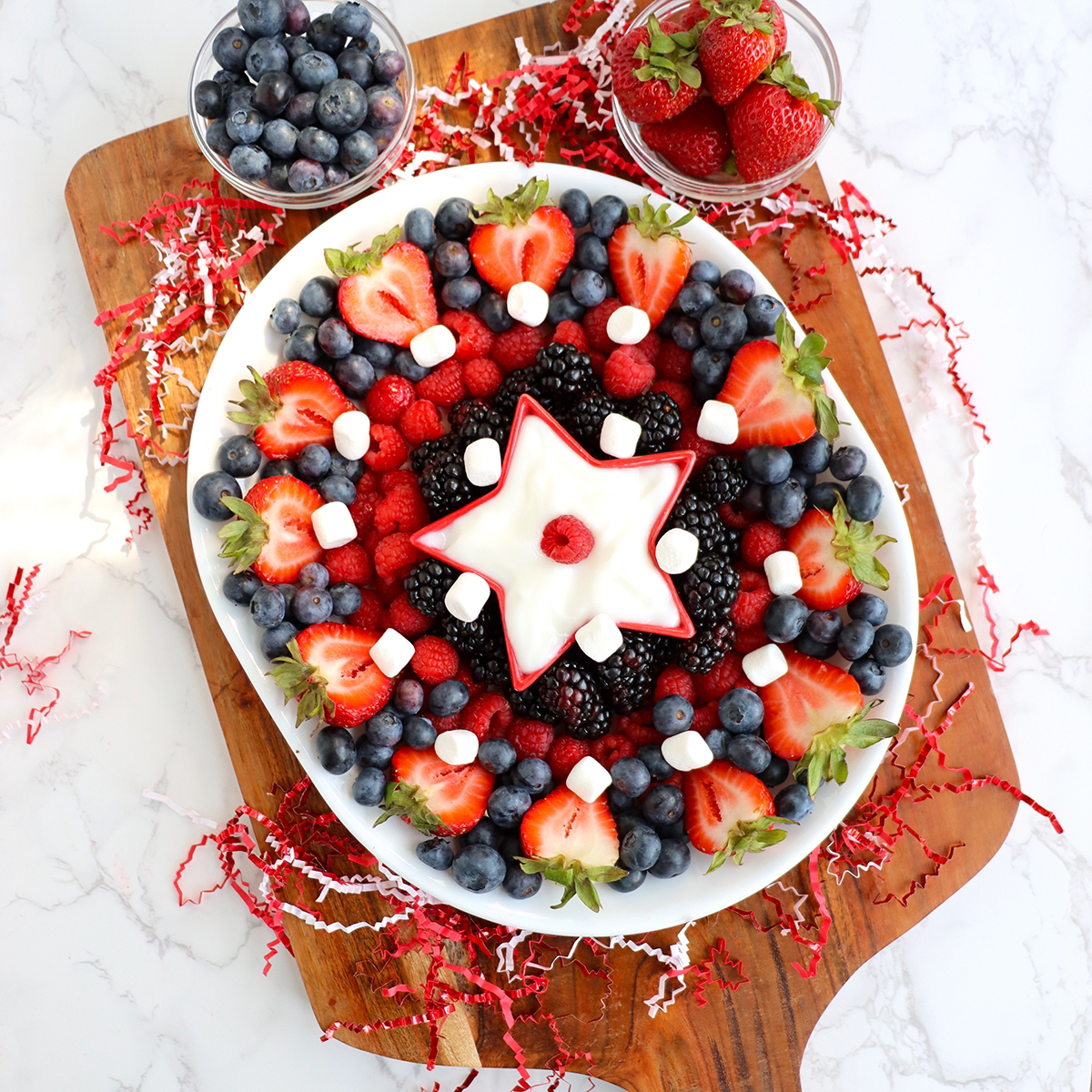
The Assembly Timeline
And trust me, stick to this timeline. I once thought I could be clever and slice everything the day before. Big mistake. I ended up with weepy melon and sad, tired-looking strawberries. Never again! The final assembly has to be done close to go-time.
- The Day Before: Wash and THOROUGHLY dry all your fruit. Make your dip. De-seed your pomegranate and store the arils in an airtight container in the fridge.
- Morning of Party (4-6 hours out): Cut your hardiest fruits like melon and pineapple. Supreme your citrus. Store everything in separate airtight containers in the fridge.
- 1-2 Hours Before Serving: This is go-time. Slice your apples and pears, treating them immediately to prevent browning. Arrange the platter: anchors, structure, colors, and fillers. Add your garnishes. Cover loosely with plastic wrap and keep it chilled.
Bringing It All Together
What if your finished platter is too huge to fit in your fridge? You have two options: assemble it on two smaller platters that do fit, or keep all your prepped fruit in containers in the fridge and do the final assembly on the big board right before guests arrive.
And for transport? If you have to take it to a party, wrap the entire platter TIGHTLY with a couple of layers of plastic wrap. Place it on a completely flat surface in your car—the trunk or floor works best. Then, just drive like you’re transporting a tiny, delicious queen.
By the way, if this all feels like a lot, just try a mini-platter first as a quick win. Grab a dinner plate, one apple, an orange, and some grapes. Practice fanning the apple and supreme-ing a few orange segments. It’s a 10-minute exercise that makes you feel like a total pro and builds your confidence for the main event.
Inspirational Gallery
- Adds an incredible festive scent.
- Creates a beautiful color and texture contrast.
- Elevates the platter from ‘snack’ to ‘centerpiece’.
The secret? Strategically placed sprigs of fresh rosemary or mint. Tucked between clusters of grapes or beside bright red strawberries, these herbs provide a sophisticated, aromatic element that subtly perfumes the air and enhances the visual appeal.
How do professional caterers get those perfectly uniform, festive shapes?
The trick is simpler than you think: miniature cookie cutters. Invest in a small set of metal cutters in holiday shapes like stars, snowflakes, or gingerbread men. They work wonders on slices of melon (like honeydew or cantaloupe), kiwi, or even firm mango. Press the cutter firmly into a ½-inch thick slice for a clean, impressive detail that takes seconds to create.
A 2018 study published in the journal ‘Appetite’ confirmed that we visually ‘feast’ with our eyes first, and a vibrant, multi-colored plate is perceived as more appealing and flavorful.
Harness this by thinking like an artist. Don’t just place fruit randomly; create color blocks. Position the deep purple of blackberries next to the bright green of kiwi, or the warm orange of persimmon beside the snowy white of banana (freshly treated, of course!). This intentional arrangement makes the platter look more abundant and appetizing.
The right base is everything: The platter you choose dramatically changes the mood. A rustic wooden board, like one from Acacia Wood Co., lends a warm, earthy feel perfect for a cozy gathering. A dark slate board makes the colors of the fruit pop with dramatic contrast. For a touch of elegance, a cool white marble platter provides a clean, luxurious canvas. Think of the platter as the frame for your artwork.
Don’t be afraid to add a few non-fruit ‘surprises’ to your platter for texture and flavor contrast. These additions turn a simple fruit plate into a more complete grazing experience.
- Something Salty: A small cluster of high-quality olives or a few slices of prosciutto.
- Something Crunchy: A handful of candied pecans or toasted almonds.
- Something Creamy: A small bowl of crème fraîche or mascarpone cheese for dipping.
Create an edible holiday wreath for a stunning visual effect. Use a large, round platter and arrange slices of green fruit like kiwi, green grapes, and honeydew in a large circle. Then, stud your wreath with ‘ornaments’ like bright red raspberries, cranberries, and pomegranate arils. Place a small bowl of a white dip, like a honey-yogurt sauce, in the center to complete the look.
In many cultures, the pomegranate is a symbol of prosperity and abundance, traditionally consumed during the winter holidays and New Year.
Breaking one open to reveal the jewel-like seeds, or ‘arils’, adds a touch of magic to your preparation. Sprinkle these vibrant red gems over your entire platter as a final touch. They not only add a burst of sweet-tart flavor and a delightful crunch but also carry a beautiful festive symbolism.
Classic Yogurt Dip: A mix of thick Greek yogurt, a drizzle of honey, and a pinch of cinnamon. It’s light, tangy, and complements virtually any fruit without overpowering it.
Indulgent Chocolate Dip: Melt high-quality dark chocolate (like Ghirardelli 72% Cacao) with a splash of cream for a rich, decadent ganache. This pairs beautifully with strawberries, bananas, and orange segments.
For a holiday crowd, offering both provides a perfect balance of fresh and indulgent options.
On a budget? The key is to create the illusion of overflowing abundance. Use a slightly smaller platter, which will look fuller with less fruit. Start by creating a generous base with more affordable fruits like grapes and orange wedges. Then, pile your more expensive or visually striking fruits, like berries and starfruit slices, high in the center to create height and a focal point.
Think beyond just sweetness and introduce a ‘zing’ factor. Candied ginger is a fantastic holiday addition. Its spicy-sweet kick provides a surprising and sophisticated contrast, especially when paired with milder fruits like pear, apple, or melon. A few thin slices scattered around the board are enough to intrigue the palate.










